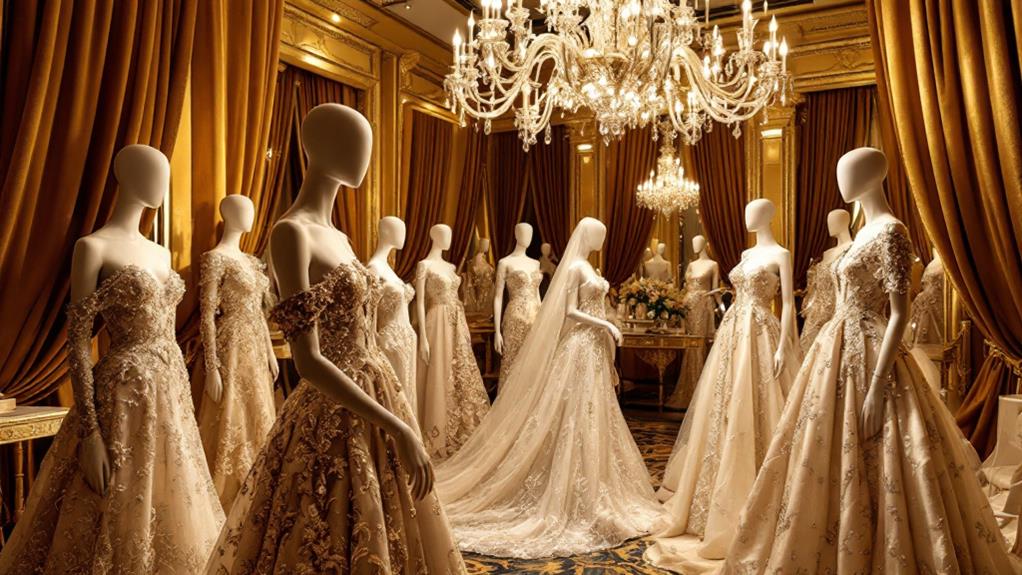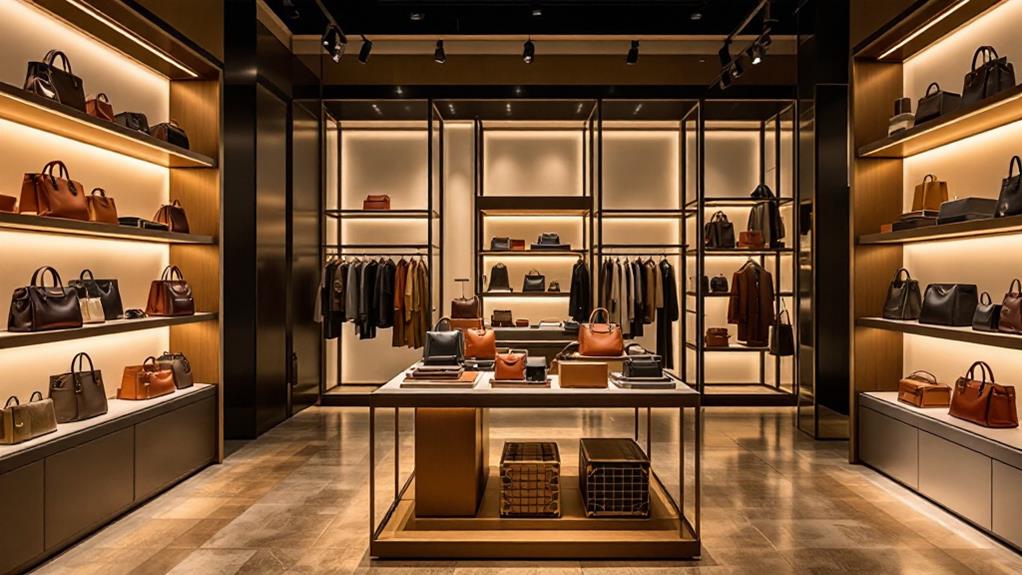Luxury Brand Spotlight: Yves Saint Laurent's Influence in Fashion
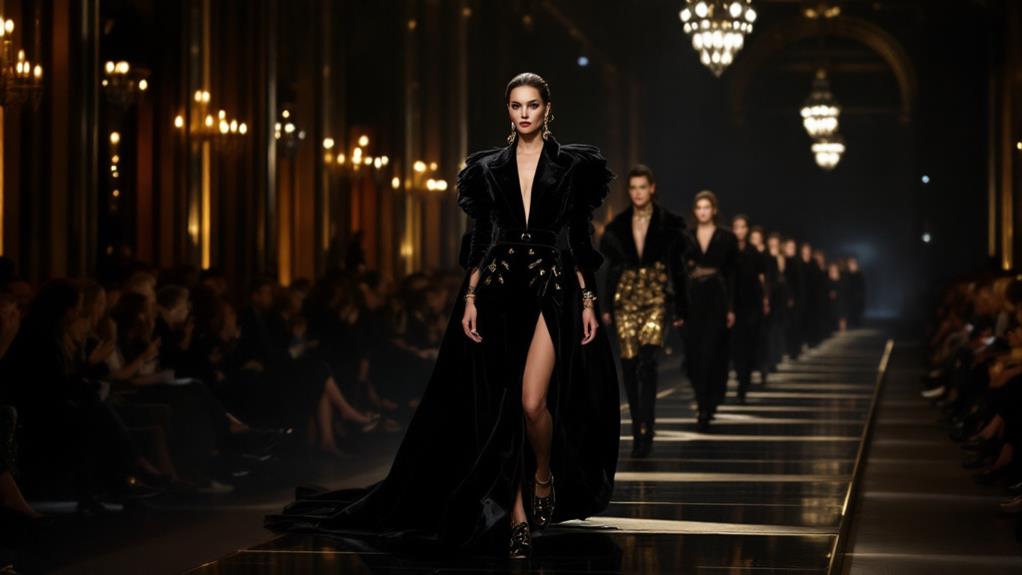
Yves Saint Laurent's influence in fashion is transformative and enduring. By introducing the Le Smoking tuxedo in 1966, he redefined women's fashion, merging sophistication with empowerment. You've seen how his revolutionary designs broke gender norms, incorporating menswear into womenswear and pushing for self-expression. Saint Laurent celebrated diversity by featuring models of color and making fashion more inclusive. His Rive Gauche boutique made luxury fashion accessible, pioneering the ready-to-wear movement. He blended art with style, turning garments into narratives, while also promoting body positivity. Saint Laurent's legacy continues to inspire, shaping modern luxury fashion's evolution in unexpected ways.
Revolutionary Designs for Women
Yves Saint Laurent's revolutionary designs for women changed the face of fashion forever. Imagine stepping into a world where women's fashion was redefined by bold, groundbreaking designs. Yves Saint Laurent did just that with his introduction of the Le Smoking tuxedo in 1966. This stunning ensemble wasn't just another piece of clothing; it was a statement. It defied the conventions of the time, offering women a new way to express empowerment and sophistication through style.
The Le Smoking tuxedo wasn't merely about breaking norms; it was about providing women with a garment that exuded elegance and authority. Saint Laurent's groundbreaking designs didn't stop there. In 1958, he introduced the Trapeze line, which liberated women from the constraints of cinched waists, offering a more fluid and comfortable silhouette. This shift was monumental, as it brought a new sense of femininity to women's fashion.
Furthermore, Yves Saint Laurent seamlessly integrated menswear elements into women's wardrobes, popularizing trousers and suits that were both stylish and functional. His collections weren't just clothes; they were a reflection of the changing times, encouraging women to accept their individuality and confidence through fashion.
Gender Norms and Fashion
As you consider the transformative power of Yves Saint Laurent's designs, it's impossible to ignore how he reshaped gender norms in fashion. In 1966, Saint Laurent introduced the groundbreaking Le Smoking tuxedo for women, marking a crucial moment in fashion history. This design challenged conventional gender norms by integrating a traditionally male garment into womenswear, offering women a new form of empowerment and elegance. The Le Smoking tuxedo became a symbol of strength and sophistication, encouraging women to accept their confidence through fashion.
Saint Laurent's cutting-edge designs didn't stop there. By incorporating trouser suits and sheer tops into his collections, he blurred the lines between menswear and womenswear, promoting a more fluid approach to fashion. This not only broadened the scope of women's clothing but also positioned it as both functional and stylish. His work was instrumental during the sexual revolution of the 1960s and 70s, embodying a period of freedom and confidence for women.
Moreover, by featuring models of diverse backgrounds, including icons like Iman and Naomi Campbell, Saint Laurent championed inclusivity and representation in high fashion, further breaking down societal barriers and redefining beauty standards.
Fusion of Art and Style
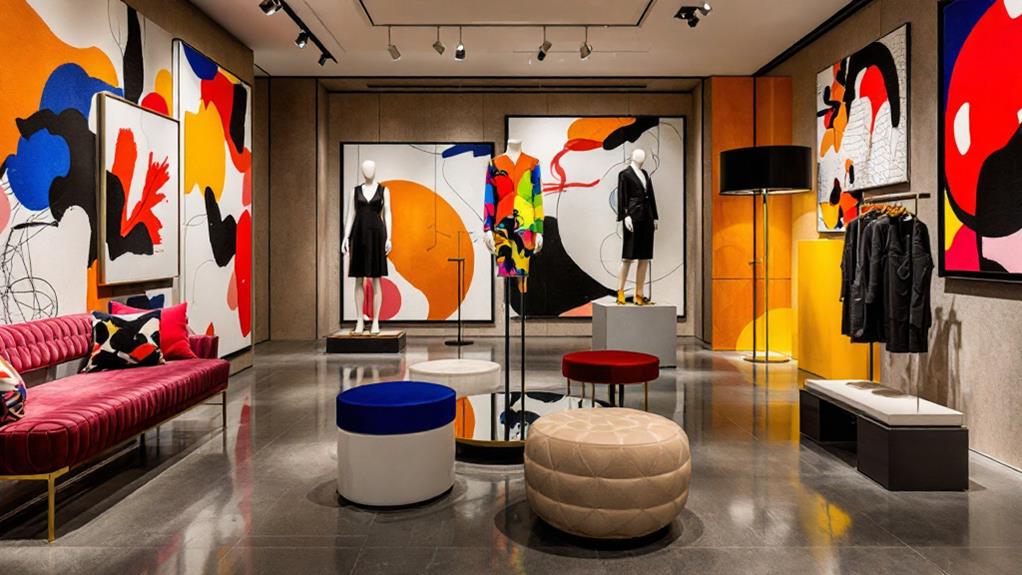
Creativity found a new canvas in Yves Saint Laurent's fusion of art and style, where fashion transcended its traditional boundaries. By integrating art into the fashion industry, Saint Laurent created designs inspired by legendary artists like Van Gogh, Warhol, and Picasso. His 1965 Mondrian collection, with its bold color blocks and geometric shapes, celebrated modernist art by mirroring the painter's unmistakable style. This groundbreaking approach not only raised garments to the level of artistic expressions but also blurred the lines between wearable art and high fashion.
You see this artistic influence in the iconic Le Smoking tuxedo, where Saint Laurent merged traditional tailoring with contemporary flair, making it a symbol of elegance and rebellion. His trailblazing runway shows were more than just fashion displays; they were art exhibitions that transformed the experience into an engaging experience. Through these shows, Saint Laurent highlighted the narrative potential within fashion, presenting garments as stories waiting to be told.
Promoting Diversity in Fashion
Saint Laurent's artistic vision extended beyond just blending fashion with art; it also encompassed a broader spectrum of humanity. He was a trailblazer in promoting diversity within haute couture, breaking barriers by featuring models of color like Iman and Naomi Campbell prominently on the runway. As you investigate his legacy, you'll see how his commitment to inclusivity shaped the fashion industry. By championing diverse beauty in high fashion campaigns, Saint Laurent guaranteed a broader representation that was rare at the time.
He didn't just challenge the status quo; he transformed it. His groundbreaking designs in the 1960s and 1970s questioned traditional notions of beauty and gender, making fashion more inclusive. This advocacy for diversity wasn't just a fleeting trend; it was a fundamental shift that Saint Laurent initiated. His efforts paved the way for future generations of designers to adopt diversity in their collections.
Today, the impact of Saint Laurent's stance on diversity still echoes, influencing ongoing discussions around representation and inclusivity. When you look at the fashion world today, you can see Saint Laurent's influence, as designers continue to build on his legacy of diversity and representation.
Personal Branding Pioneering
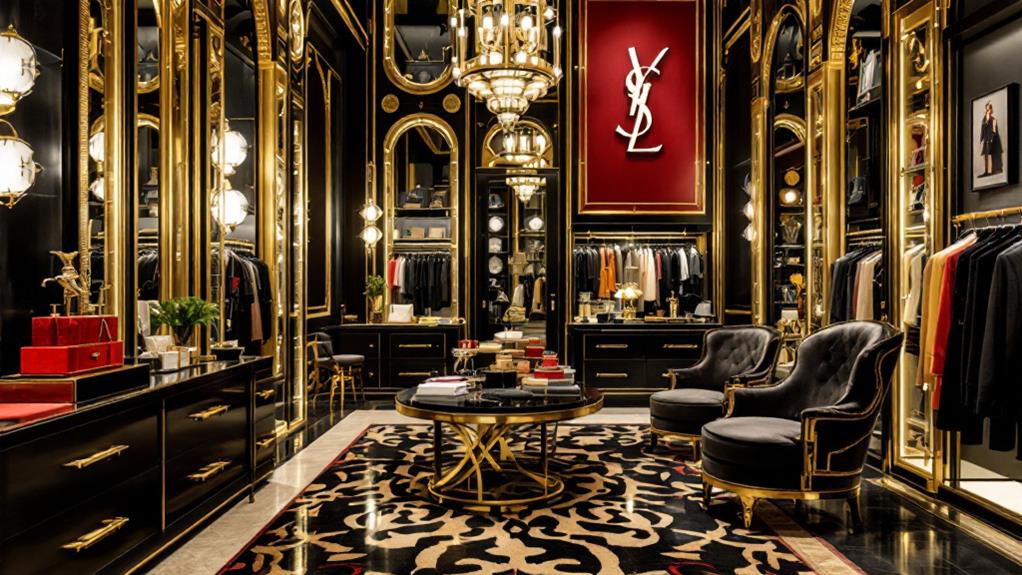
While many designers of his time remained behind the scenes, Yves Saint Laurent boldly stepped into the spotlight, pioneering personal branding in the fashion world. He didn't shy away from using his own image, especially posing nude for the YSL Pour Homme advertisement in 1971. This provocative move challenged societal norms and redefined how fashion marketing could intertwine with personal identity. By doing so, Saint Laurent set a new standard for authenticity in brand representation.
You can see how his approach emphasized self-expression, making him not just a designer but an influential public figure. He cleverly used his personal image as a marketing tool, creating an emotional connection with consumers. This strategy wasn't just about selling clothes; it was about selling a lifestyle and a persona that resonated deeply with his audience. His willingness to tackle controversial themes around sexuality and gender through his branding reshaped industry dialogues, pushing boundaries and encouraging others to do the same.
Embracing Body Positivity
Yves Saint Laurent shook up the fashion world by accepting body positivity long before it became a mainstream movement. His late 1960s collections, featuring sheer organza and transparent tops, were revolutionary. By promoting confidence, Saint Laurent encouraged women to accept their natural bodies, free from the constraints of traditional undergarments. His designs often featured models who went braless, aligning with the period's sexual revolution and sparking broader discussions around women's rights and body autonomy.
Saint Laurent's approach wasn't just about fashion; it was a statement of equality. He used provocative designs to challenge societal norms regarding women's attire, presenting fashion as a powerful form of self-expression. This boldness emphasized the importance of equality between the sexes, encouraging women to wear what made them feel confident and empowered.
Moreover, Saint Laurent was inclusive in his casting choices, showcasing varied models, including women of color. By doing so, he fostered visibility for different body types and beauty standards, advocating for inclusivity within the fashion industry. His impact on body positivity continues to resonate, inspiring contemporary movements that celebrate diverse body shapes and sizes in fashion.
Ready-to-Wear Fashion Movement
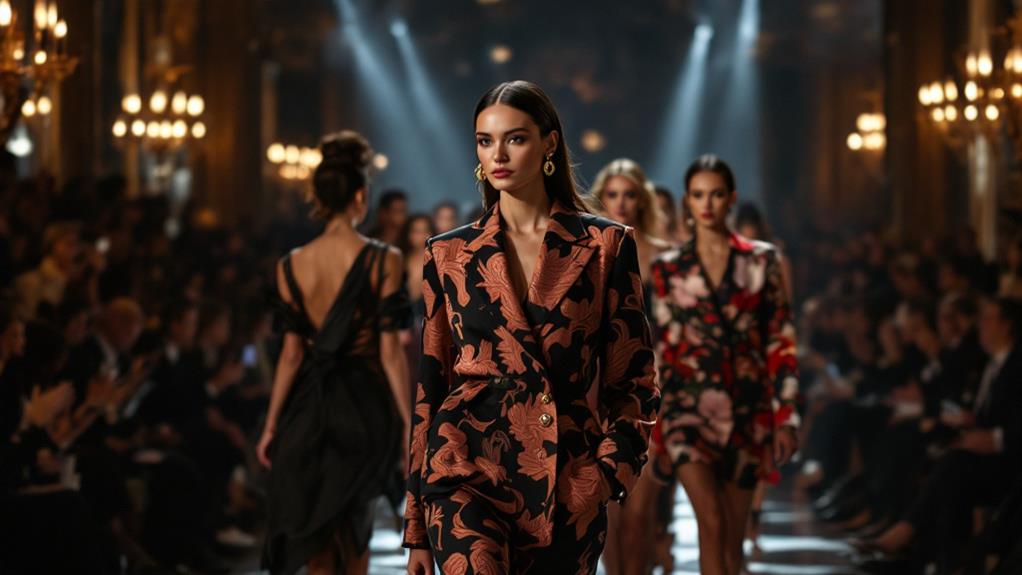
Building on his revolutionary ideas about body positivity, Yves Saint Laurent further disrupted the fashion industry with the launch of the Rive Gauche ready-to-wear boutique in 1966. By doing so, Saint Laurent transformed how you perceive high fashion. He made it accessible, allowing you to experience sophisticated designs without needing to enter the exclusive world of couture. The introduction of prêt-à-porter collections meant you could directly purchase high-end fashion, a game-changer for women enthusiastic to own stylish clothing that wasn't confined to the elite.
Saint Laurent's ready-to-wear concept wasn't just about accessibility; it was about empowerment. With groundbreaking designs like trouser suits and sheer tops, you had the chance to challenge traditional fashion norms and express yourself freely. YSL blurred the lines between high fashion and everyday wear, ensuring that even your ordinary attire could make a bold statement.
This democratization of fashion emphasized the significance of ready-to-wear lines, setting a new standard in the luxury market. Saint Laurent's inventive approach paved the way for future brands, making sophisticated designs a staple in your wardrobe and validating ready-to-wear as an essential segment in the fashion industry.
Enduring Legacy and Evolution
The silhouette of Yves Saint Laurent's influence looms large over the world of fashion, a tribute to his enduring legacy and evolution. When he founded his fashion house in 1961, he transformed the industry by making high fashion accessible with ready-to-wear collections. His bold move democratized style, allowing more people to enjoy the elegance once reserved for the elite.
The introduction of Le Smoking tuxedo suit in 1966 was groundbreaking. It wasn't just about fashion; it was about challenging gender norms and empowering women. You can see this legacy in the confidence and elegance women display today when donning suits. Saint Laurent didn't just stop there. His commitment to diversity was ahead of its time, featuring models like Iman and Naomi Campbell, breaking racial barriers on the runway.
This influence persists as creative directors like Tom Ford and Anthony Vaccarello continue to adopt Yves' vision. They innovate while respecting the brand's core principles, ensuring the legacy of Saint Laurent inspires new generations. The fashion house remains a guiding light for those looking to challenge norms and redefine elegance, proving that Yves Saint Laurent's impact is truly timeless.



